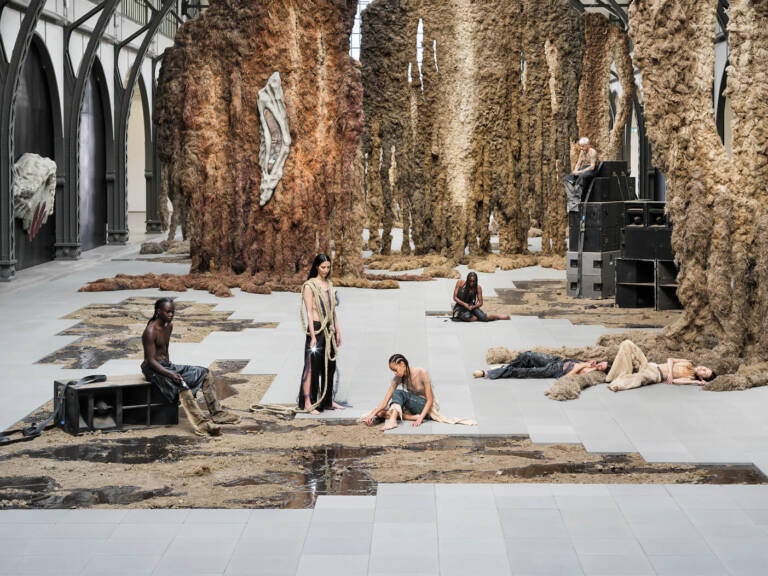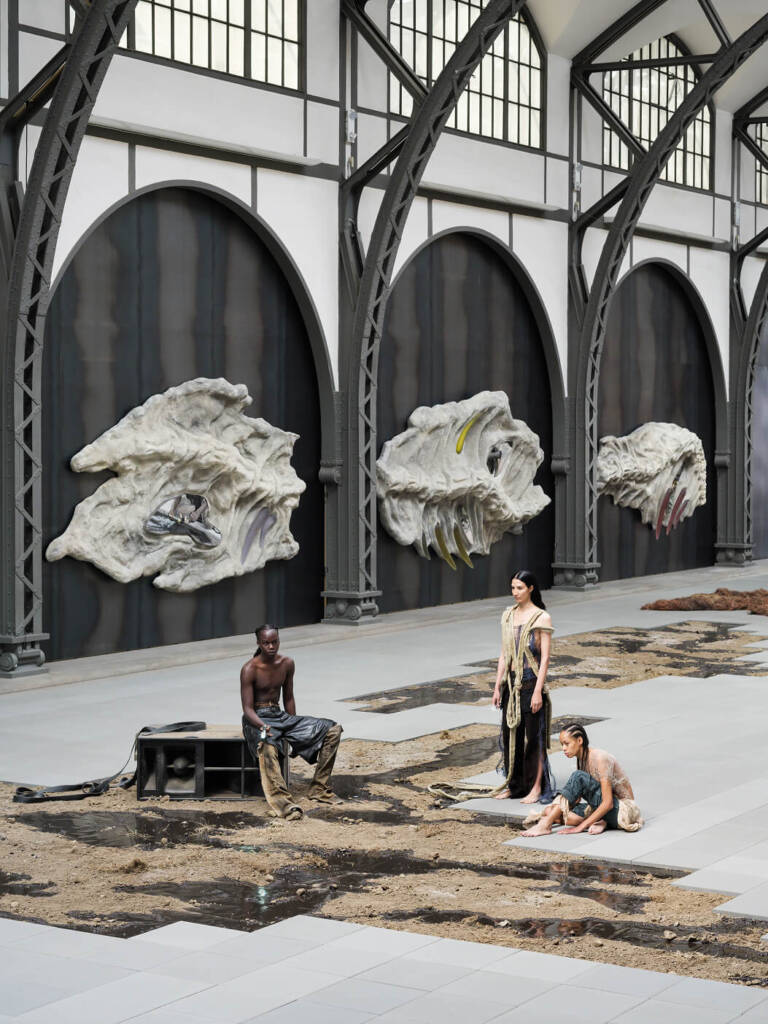
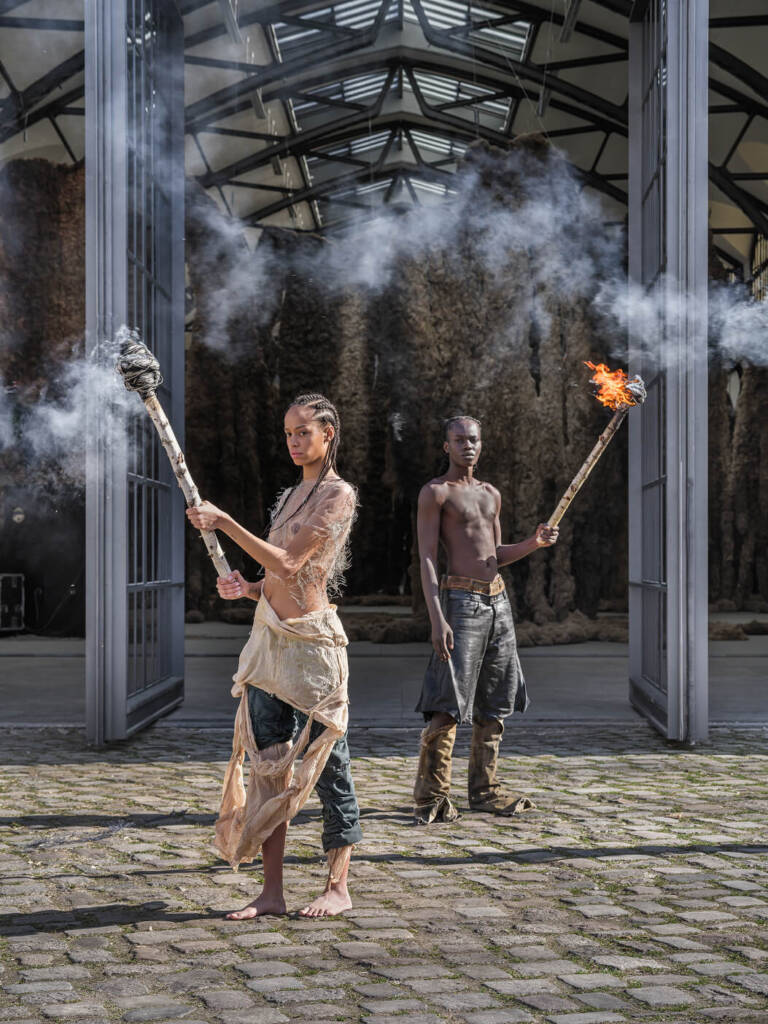
With her CHANEL Commission at Hamburger Bahnhof, embrace sees Klára Hosnedlová knitting raw flax, hemp, and cast glass into vast, hand-woven stories and sculptural reliefs that talk with the museum’s brutalist bones. Drawing on Czech New Wave cinema and generational memory, she creates intimate, meditative landscapes that visitors are free to travel through – no barriers, no hierarchy – transforming the gallery into a lived environment. Through this fusion of fragile, organic materials and monumental forms, Hosnedlová redefines exhibition space as a dynamic interplay of history, nature, and human scale.
hube: You transitioned from painting to embroidery during your studies, seeking a more meditative process. How has this shift influenced your artistic expression and the themes you explore?
Klára Hosnedlová: At the time I started working with embroidery in art school, embroidery was not considered an art form per se; it was rather viewed as a technique used in the textile industry or as a domestic activity. This is why I didn’t feel the pressure and felt more freedom in my practice. But it is a choice of medium rather than a choice of content. It is a lonely and slow activity, which matches my need for intimacy.
h: Your installations often draw from modernist and brutalist architecture. What captivates you about these styles, and how do they shape the environments you create?
KH: Brutalist architecture is radical in its harshness and heaviness. Because of that, I can create a soft environment that directly communicates with it. I can compensate for its strong, masculine character with fragile, organic, more feminine elements. I like working with contrasts.
h: embrace is the inaugural project for the CHANEL Commission at Hamburger Bahnhof. How has this collaboration influenced the scope and realisation of your installation?
KH: I was officially informed of this partnership in December 2024, but I had been working on the project for about a year, so all the conception and a major part of the production were already in an advanced state by then. This collaboration is an agreement between CHANEL and Hamburger Bahnhof, the details of which I don’t personally know. I worked on this project independently and had the privilege of realising the artworks and final installation exactly as I had imagined from the beginning.
h: What inspired you to explore themes of home, utopia, and daily life under various political systems for embrace?
KH: My direct inspiration for this exhibition isn’t science fiction but Czech New Wave cinema (from the 1960s/1970s), especially scenes from František Vláčil’s Markéta Lazarová and The Valley of the Bees. Both films are set in the Middle Ages and evoke not only the inner emotions and desires of their characters but also speak to a broader human brutality and the enduring presence of myths. I see them as universal tales, yet they’re set in beautiful natural surroundings, close to naturalism. I’m intrigued by trans-generational knowledge passing and inheritance – how history and its events impact (or don’t impact) how people live at a certain time: how they think, behave, and what endures across time, transferring to the next generations.
h: The installation incorporates materials like flax fibres, embroidery, cast glass, sandstone, clay, iron, and concrete slabs. How did you choose these materials, and what do they signify in the context of your work?
KH: I’m interested in bringing organic, natural materials into galleries or unusual places. This reminds us of nature’s predominant role, and nature plays a big part in sensorial memory. The six large tapestries at Hamburger Bahnhof are hand-woven, inspired by the classical Gobelin technique, but instead of traditional threads, we use raw flax and hemp as the main materials. We work with raw fibers, giving the tapestries a unique texture – an organic mass, an animal skin, a wall of nature.
I’m also interested in materials or textures as cross-generational references to our collective memory, which I associate with fragments of our present-day reality. For example, I created sand-coated sculptures with embedded glass to resemble sandstone – monumental reliefs once common in Czech public spaces. The concrete slabs recall the pavement in my childhood village and are common in socialist urbanism. The glasswork may remind viewers of the Czech Republic’s rich glassmaking history. I aim to create landscapes that feel relatable, not through personal memory but through a general sense of authenticity.
h: You’ve collaborated with artisans like glassmakers from Nový Bor. How do these partnerships influence your work, and what do you learn from integrating traditional crafts into contemporary art?
KH: The glass elements were made at Studio Lhotský in the Czech Republic, known as the oldest cast-glass studio in the world – a technology rediscovered in the 1950s by Stanislav Libenský and Jaroslava Brychtová. I research old techniques and historical know-how, then find collaborators who can help incorporate them into my work. I mix influences and timelines so the artworks never mimic an actual historical artefact but instead embrace several possible scenarios and eras, bringing their own story to the surface. This genuine collaboration helps everyone experiment with the material, discover new uses, and test its limits.
h: Your installations invite viewers to navigate and physically engage with the space. What experience do you hope to create for the audience through this interaction?
KH: I never ask for the installations to be ‘protected’ from walking on them – there are no barriers, and I’m fully aware some visitors may step on a tapestry or an epoxy puddle. This freedom to circulate, to be fully integrated in the environment, is crucial for me. It aligns with the idea of enjoying the exhibition as an experience and blurring the hierarchy between artwork and scenography.
h: With upcoming exhibitions at Hamburger Bahnhof, are there new themes or mediums you’re excited to explore? How do you see your work evolving in the coming years?
KH: Of course, I’m interested in exploring new themes and media, but having just finished a major project at Hamburger Bahnhof, it’s too soon to say. We’re entering the exciting but challenging phase of researching and developing new ideas and possibilities, and that takes time.
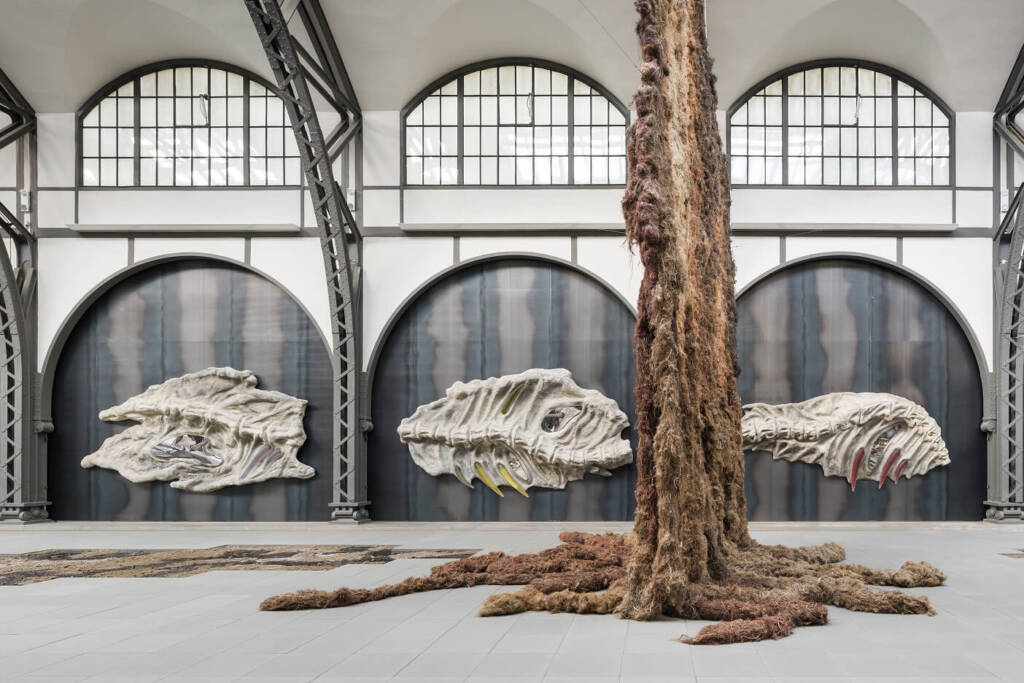
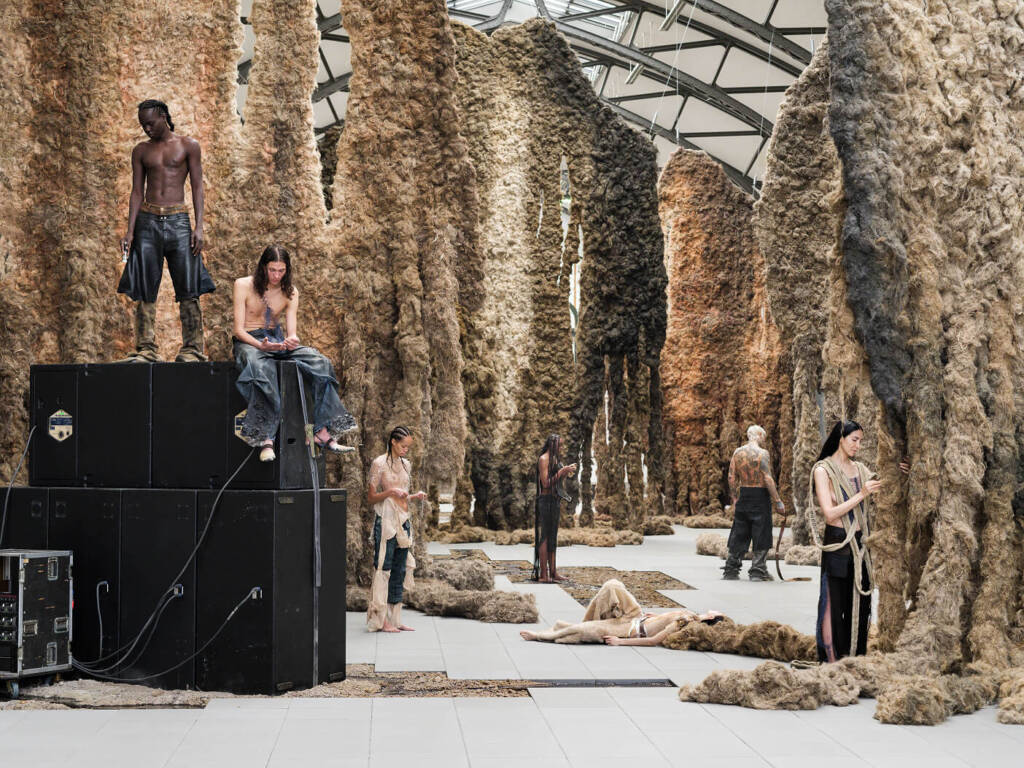
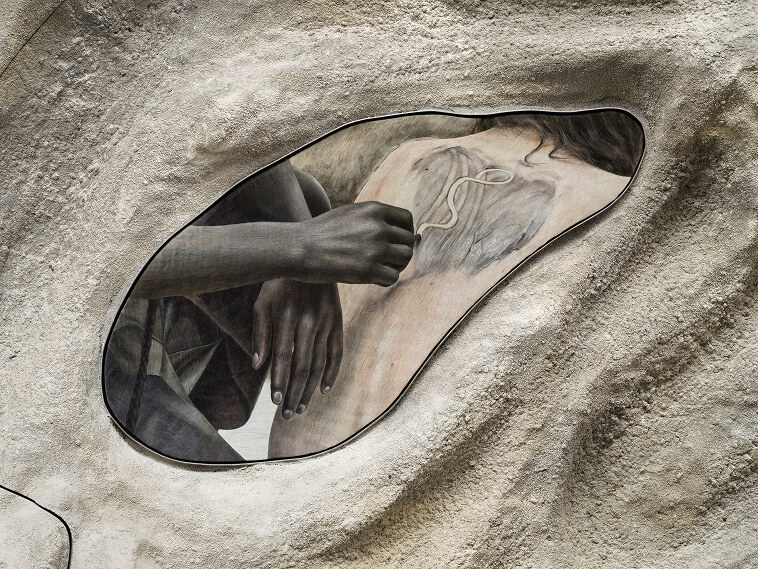
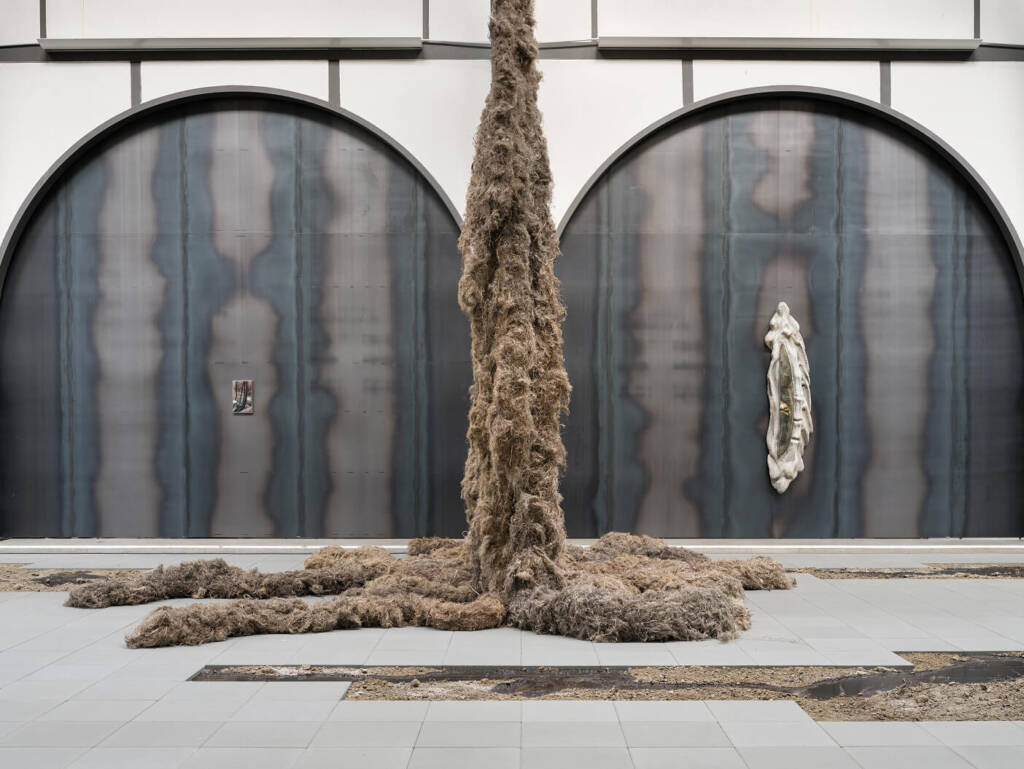

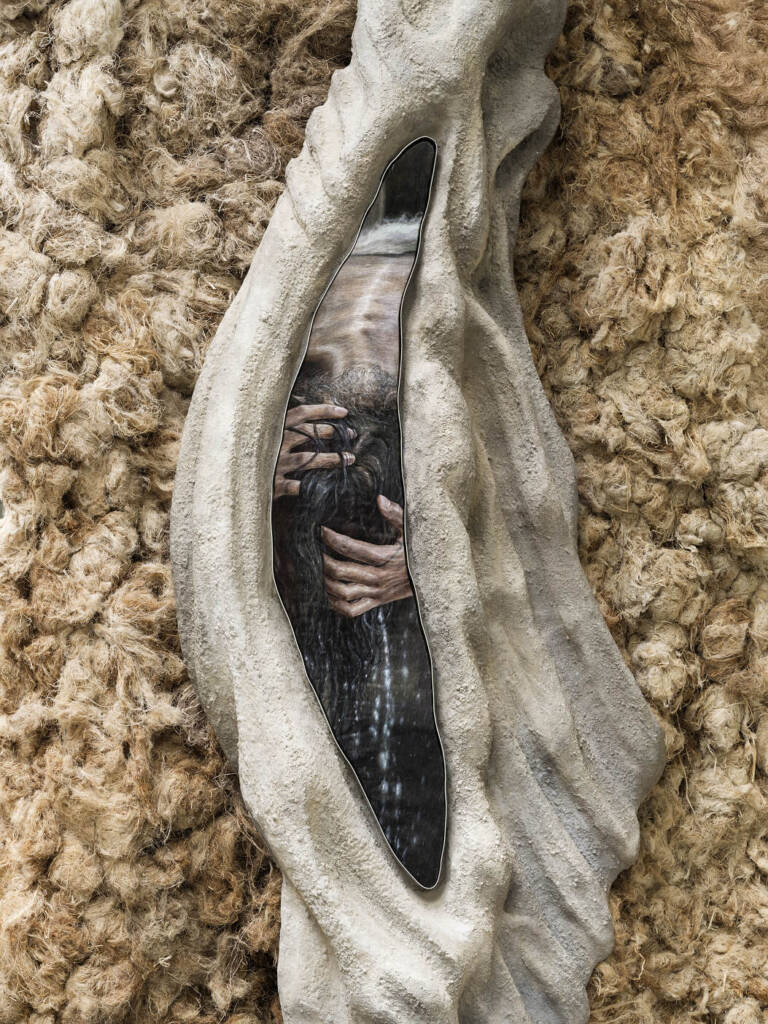
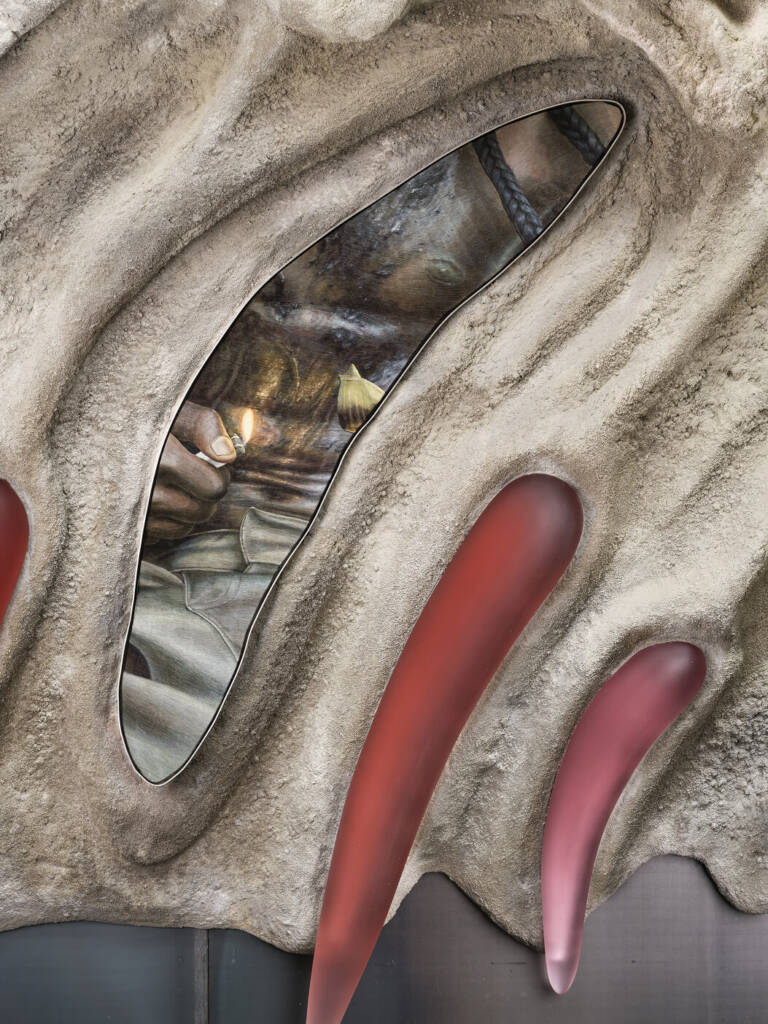
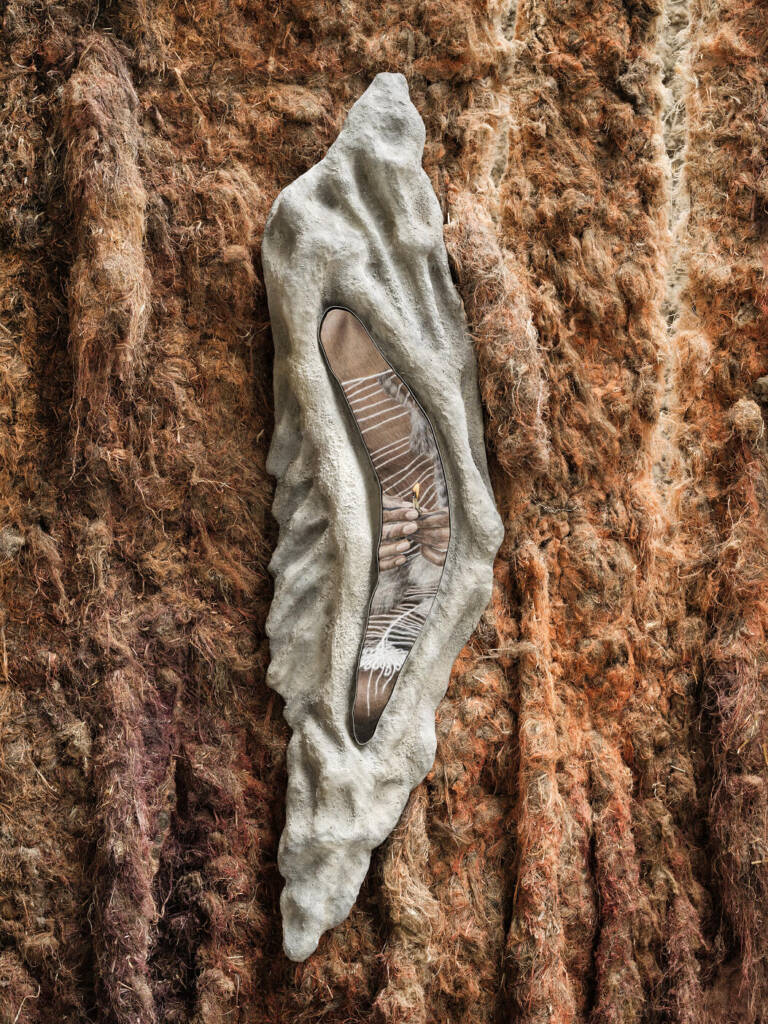
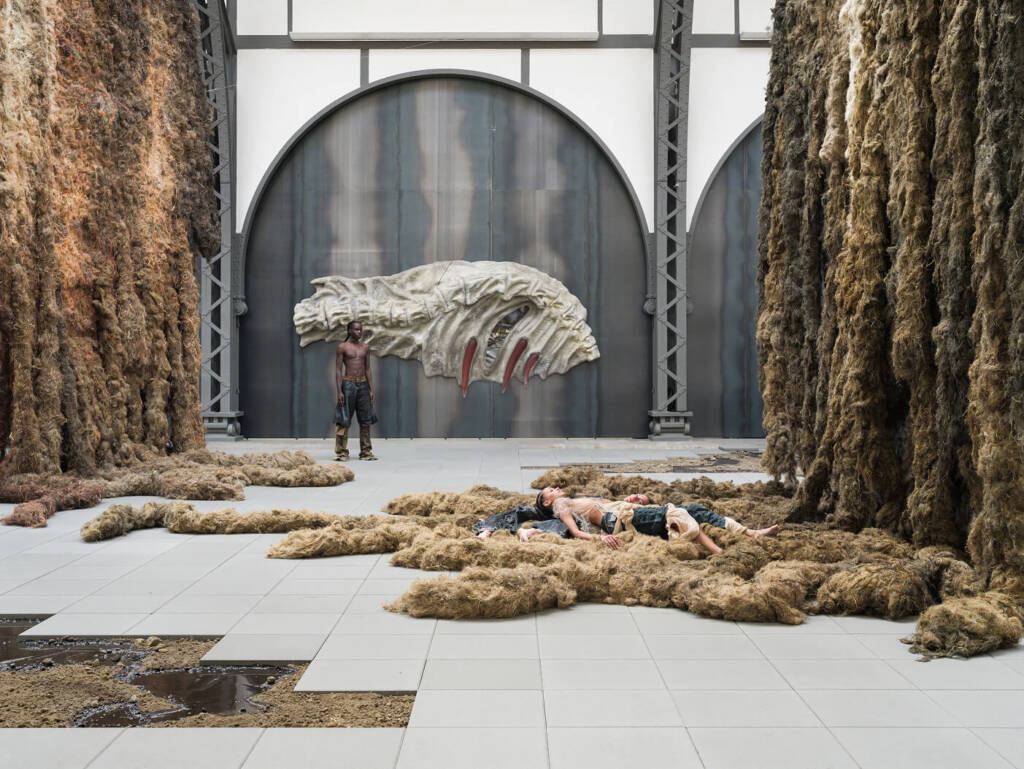
CHANEL Commission: Klára Hosnedlová. embrace, installation view, Hamburger Bahnhof – Nationalgalerie der Gegenwart, 1.5. – 26.10.2025
Photography by ZDENĚK PORCAL – STUDIO FLUSSER
Courtesy of KLÁRA HOSNEDLOVÁ, KRAUPA-TUSKANY ZEIDLER, WHITE CUBE and NATIONALGALERIE – STAATLICHE MUSEEN ZU BERLIN
